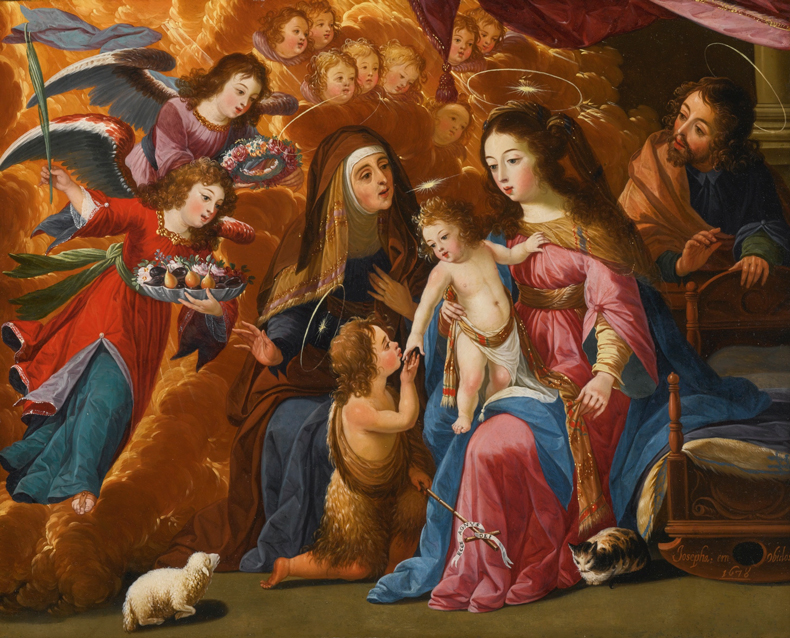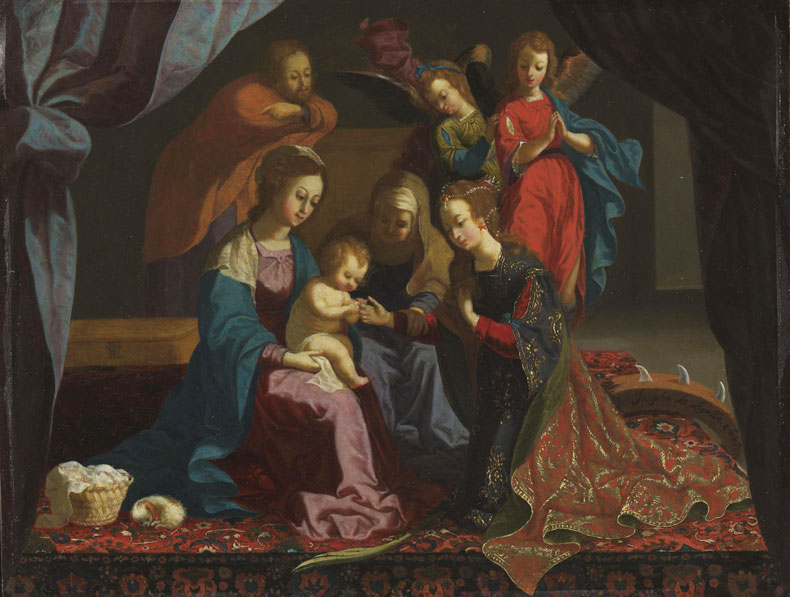From the October 2025 issue of Apollo. Preview and subscribe here.
The first surprise provided by Carmen Ripollés’s new monograph is that the painter Josefa de Óbidos was born not in the Portuguese town after which she is named, or anywhere else in Portugal for that matter, but in the Spanish city of Seville. In 1630, the year of her birth, Portugal barely existed. Since 1580, the country had been ruled by the kings of Spain and much of its talent – including Josefa’s father, the artist Baltazar Gomes Figueira – had drifted across the Guadiana River in the hope of betterment in the trading termini of Andalusia. In Spain, Baltazar helped beat off an English raiding party, hung out with Francisco de Zurbarán and eventually made enough of a reputation for himself as a painter of still lifes and devotional scenes to return with his young family to his native town of Óbidos, some 80km north of Lisbon. It was there that Josefa grew up, learning from her father, and produced much of her work.
The second surprise is that Josefa attained not only renown on the back of her painting, but also substantial wealth. As Ripollés observes, the female artist was not an unknown phenomenon in the 17th century. Josefa, however, was much more than that. In her mid thirties she acquired the status of ‘emancipated maiden’, which allowed her to enter into contracts independently so long as she remained unmarried. Thereafter she invested the proceeds of her painting in land and property, while also acting as a moneylender. By the time of her death in 1684, she owned a large country estate with vineyards, orchards and cottages, plentiful jewellery, textiles from India, rugs from North Africa and countless other artefacts of empire. In telling the story of how Josefa achieved such riches, Ripollés offers an interesting study of female ingenuity in a male-dominated world.

Some 150 works by Josefa survive. The majority are in the genres – still life and religious painting – that were Baltazar’s bread and butter. The works of both father and daughter are characterised by contrasts of light and shade. Yet Josefa did not merely imitate Baltazar’s practices. Ripollés believes that portraits formed a significant part of her work too. Only one example has been definitively attributed to Josefa, but anecdotal evidence suggests that she attracted commissions from eminent families, including the Braganzas, descendants of the old royal house of Aviz who wrested the Portuguese crown from the Habsburgs in 1640. One chapter is devoted to Josefa’s work on copper, a material, according to Ripollés, that appealed to women artists because it required little preparation or studio space. In this medium she created many small-scale, richly detailed depictions of scenes from the lives of Christ, the Virgin Mary and the saints for noble clients.
Josefa’s other main patrons were monasteries and churches, for which she produced a number of altarpieces, many centred on strong, independent women such as Saint Teresa of Ávila. Ripollés illuminates the strategies women artists such as Josefa used to put their names about. Much, indeed, depended on the name itself. Ripollés shows how Josefa, after experimenting with several denominations early in her career, decided to style herself ‘de Óbidos’. This was partly, Ripollés infers, so that she could distinguish herself from her father, but there was another reason too. Historically, Óbidos had formed part of the endowment of the queens of Portugal. After the restoration of the Portuguese monarchy in 1640, Josefa sought to associate herself with both the court and the cause of Portuguese independence by adopting the name of the town. Ripollés also describes how Josefa took care to devise a signature that would suggest to viewers competence in the courtly accomplishment of calligraphy and a level of education above that of a common-or-garden craftswoman.

Josefa struggled with perspective when handling group scenes and characterisation was not one of her strong suits – many of her faces have the pallid spheroidicity of porcelain figurines. For the Portuguese writer Miguel Torga, the baby Jesus in Josefa’s hands became indistinguishable from an ‘egg roll’. She excelled, however, in the depiction of clothes and fabrics, an achievement Ripollés links to the instruction in needlework that early modern girls typically received.
Although the majority of Josefa’s paintings depict religious themes, Ripollés offers a bracingly materialist analysis of her art, drawing attention to the ways in which it presented the commodities, many imported from Asia, that she and her clients relished. In The Mystic Marriage of Saint Catherine (1647), the titular martyr, clad in an elaborate brocade dress adorned with rubies, bows and pearls, kneels on a Persian-style rug overlooked by angels garbed in silk. Sumptuous fabrics fill Reading the Fortune of the Christ Child (1667), where something resembling a Japanese bangasa serves as a halo for the Virgin Mary. Ripollés connects a piece of jewellery depicted in The Virgin and Saint Joseph Giving a Necklace to Saint Teresa (1672) to an item listed in an inventory of Josefa’s belongings.

Consumption lies at the heart of the still lifes too. Josefa’s father introduced the genre to Portugal; Ripollés detects in the work of both Baltazar and Josefa a patriotic purpose as well as a desire to reflect the tastes of the circles in which they moved. In Still Life with Cheese and Cherries (c. 1670) and Still Life with Sweets and Pottery (1676), for instance, Josefa used a restrained palette of reds, yellows and browns to vaunt local delicacies and celebrate the prosperity that renewed independence had brought Portugal.
The research that has gone into this extensively illustrated book is excellent, but one cannot garland the prose with similar praise. The writing is often indifferent and sometimes worse, jellifying into statements that defy elucidation: ‘here Josefa capitalizes on the possibilities of copper as a support that allows her to enhance visual meaning’. If, like Josefa’s patrons, readers are prepared to live with a certain unevenness, they will find much of interest here about a formidable woman.

Josefa de Óbidos by Carmen Ripollés is published by Lund Humphies (£25).
From the October 2025 issue of Apollo. Preview and subscribe here.
